Report Details
Not found what are you looking for

Medical Devices & Consumables
Capsule Endoscopy Market Size, By Product (Systems, Wireless Capsule), By Application (OGIB (Obscure GI Tract Bleeding), Small Intestine Tumor, Crohn’s Disease, Other), By End-Use (Ambulatory Surgery Centers/Clinics, Hospitals, Other), By Regional Outlook, Competitive Landscape And Forecast, 2032
Description
ToC
Companies
Speak with Analyst
Market Overview:
Market Introduction
The global capsule endoscopy market was around USD 567.4 million in 2022, and it's expected to grow to 1.6 billion in 2032 With an annual rate of 9.6%. The main reasons for this growth are the increasing number of cancer cases, a growing elderly population worldwide, a higher demand for less invasive diagnostic methods, and the introduction of advanced capsule technologies. Moreover, rising healthcare spending, driven by the need for effective cancer diagnostics and government support, is also expected to boost market expansion. Capsule endoscopy offers benefits like painless viewing of the gastrointestinal tract, precise diagnosis, and faster results, making it more popular in recent years.
The adoption of minimally invasive surgeries has increased the use of capsule endoscopic systems and wireless capsules, especially for detecting or diagnosing gastrointestinal problems like obscure GI tract bleeding, Crohn's disease, cancer, and small intestine tumors. Capsule endoscopy provides efficient and rapid screening for these conditions, which has led to increased adoption and market growth. However, there are limitations, such as capsule retention and the restricted use for diagnostics only, that are obstacles to market growth.
Capsule retention, where the capsule may get stuck and require retrieval through endoscopy or sometimes surgery, occurs in approximately 2% of patients undergoing small bowel capsule endoscopy, as indicated by a 2017 study in the Annals of Translational Medicine. This poses a challenge to product adoption. Nevertheless, with technological advancements and better-designed wireless capsules, the retention rate is expected to decrease, thus boosting market growth. Additionally, the COVID-19 pandemic has had a significant impact on the market. The postponement, delay, cancellation, and reduction of elective surgeries during the pandemic have greatly affected market growth. Changes in regulations related to surgical procedures and endoscopic screenings, as well as disruptions in the supply chain, were key factors hindering market growth during the pandemic.
Key Takeaways:
The rising prevalence of gastrointestinal diseases is a significant driver of market growth:
The increasing incidence of gastrointestinal disorders is contributing to the Compound Annual Growth Rate (CAGR) of the capsule endoscopy market. Gastrointestinal conditions such as inflammatory bowel disease (IBD), Crohn's disease, and celiac disease are becoming more prevalent worldwide. For instance, IBD affects approximately 0.5% to 1% of the population in affluent countries, according to data from the World Gastroenterology Organization.
Capsule endoscopy serves as a non-invasive diagnostic method that enables healthcare providers to more efficiently detect and monitor these illnesses. In contrast to traditional endoscopy, which involves the insertion of a long, flexible tube with a camera into the digestive tract, capsule endoscopy is less invasive and offers greater comfort to patients.
As the prevalence of gastrointestinal disorders continues to rise, the demand for capsule endoscopy is expected to grow. This non-invasive and safe diagnostic method assists healthcare providers in more accurate and effective diagnosis and monitoring of gastrointestinal diseases. Consequently, the capsule endoscopy market is poised for expansion in the coming years.
Furthermore, advancements in capsule endoscopy technology are driving rapid market growth. This non-invasive diagnostic approach captures images of the digestive tract using a small, wireless camera. It is instrumental in diagnosing conditions such as Crohn's disease, celiac disease, and gastrointestinal bleeding. Technological innovations, including high-resolution cameras and wireless communication systems, have enhanced the precision and efficiency of capsule endoscopy procedures.
Moreover, the application of artificial intelligence and machine learning algorithms enables the analysis of vast amounts of data generated by capsule endoscopy procedures, further improving diagnostic accuracy. The increasing incidence of gastrointestinal diseases, coupled with the growing demand for non-invasive diagnostic methods, is propelling the capsule endoscopy market forward. Continued technological enhancements are expected to drive market growth as more patients and healthcare providers adopt capsule endoscopy as a diagnostic tool.
Additionally, the rising demand for point-of-care diagnostics is another key driver of the capsule endoscopy industry. Point-of-care testing enables healthcare providers to conduct diagnostic tests conveniently and swiftly at the patient's bedside, in a clinic, or even at home. Capsule endoscopy represents a form of point-of-care diagnostics that empowers healthcare providers to diagnose and monitor gastrointestinal diseases efficiently.
This approach can be administered in a clinic or at home, making it a convenient option for individuals who reside in remote areas or face mobility challenges. The increasing use of capsule endoscopy in remote and rural locations illustrates the expanding demand for point-of-care testing. Many isolated and rural areas lack access to healthcare services and diagnostic testing, making capsule endoscopy a valuable solution. It is gaining popularity as a diagnostic method in countries like India, where a significant portion of the population resides in rural areas.
Overall, capsule endoscopy is being utilized by healthcare practitioners to diagnose and monitor gastrointestinal illnesses in individuals who have limited access to medical facilities. The procedure offers a less invasive and more patient-friendly alternative to traditional endoscopy, making it a preferred choice in remote and rural settings.
Report Coverage:
| Report Details | Outcome |
| Market Size in 2022 | USD 567.4 Million |
| Revenue CAGR | 9.60% |
| Market Size in 2032 | USD 1.6 Billion |
| Base Year for Estimation | 2022 |
| Historical Data | 2018-2021 |
| Forecast Period | 2023-2032 |
| Segments Covered | Product Type, Application, End Use, and Region |
| Qualitative Info | •Value Chain Analysis •Pricing Analysis •Regional Outlook •Market Trends •Market Share Analysis •Competition Analysis •Technological Advancements |
| Customization Scope | 10 Hours of Free Customization and Expert Consultation |
Product Outlook:
The global market can be further categorized by product into wireless capsules and systems. In 2022, wireless capsules dominated the market, accounting for 71.4% of the overall revenue. This segment is projected to maintain its leading position throughout the forecast period, with the fastest growth rate (CAGR) of 8.7%. The dominance of wireless capsules can be attributed to their advantages in diagnosing or detecting complex health conditions such as gastrointestinal diseases, cancer, Crohn's disease, and other small bowel diseases. Medical practitioners and healthcare professionals are increasingly favoring the use of wireless capsule endoscopy for its ability to provide quicker and more efficient diagnoses, further fueling the growth of this segment.
Application Outlook:
The segment dedicated to obscure GI tract bleeding (OGIB) led to revenue share in 2022 due to the numerous benefits offered by capsule endoscopy in diagnosing and detecting OGIB. The advantages include real-time visualization, image capture, and comprehensive analysis of the entire small intestine, resulting in reliable and precise results. This has contributed to the increasing adoption of capsule endoscopes for OGIB. Additionally, the shift in trend towards adopting capsule-based endoscopy screening for OGIB over conventional methods like double-balloon enterostomy is further supporting the growth of this segment. The Crohn's disease segment is also expected to experience substantial growth during the forecast period.
End-use Outlook:
Regarding end-use, the market is categorized into hospitals, ambulatory surgery centers (ASCs)/clinics, and other healthcare facilities. Hospitals dominated the market in 2022 due to the widespread adoption and utilization of capsule endoscopy services within hospital settings. Favorable reimbursement policies provided by governments have also played a role in boosting the growth of this segment. Hospitals typically serve as the primary healthcare system in most countries, leading to a higher number of screenings being performed there, thus indicating greater product adoption and demand. This is another key factor driving the growth of the hospital segment. The ASCs/clinics end-use segment is expected to experience the fastest growth rate during the forecast period. The minimal time required for capsule endoscopy screening procedures and the rapid results they provide are key factors driving demand for these procedures in ambulatory surgical centers and clinic systems.
Regional Outlook:
North America emerged as the dominant market, holding the largest revenue share of 47.8% in 2022. This is primarily attributed to the increasing preference for minimally invasive screening procedures and the adoption of technologically advanced products and systems. Additionally, the region benefits from an enhanced healthcare infrastructure, which further propels market growth. The growing awareness of the importance of early disease screening, including gastrointestinal disorders, cancer, and other chronic conditions, is a prominent factor supporting market expansion in North America.
Asia Pacific is anticipated to demonstrate a lucrative Compound Annual Growth Rate (CAGR) over the forecast period. This growth can be attributed to the region's heightened demand for capsule-based endoscopic technologies for screening procedures. Furthermore, the improvement in healthcare infrastructure and the rising geriatric population in the region will contribute to its growth. Significant economic development in Asia Pacific has attracted international investments, further boosting market prospects. The presence of major players and a continually developing startup landscape also play a role in supporting market growth in the region.
Competitive Landscape:
Major players in the capsule endoscopy industry include Anx Robotica, Capsovision Inc., Check-Cap Ltd, Changing Jinshan Science and Technology Group Co., Fujifilm Holding Corporation, IntraMedic Co., Medtronic plc, Olympus Corporation, RF System Lab, Shangxian Minimal Invasive Inc., and others. These prominent market players are actively deploying advanced technologies to address the substantial unmet needs of consumers. Their strategic initiatives encompass forming partnerships, introducing new products, and facilitating commercialization as part of their market expansion strategies.
Some Leading Market Companies Listed in the Report:
- Anx Robotica
- Capsovision Inc.
- Check-Cap Ltd
- Chongqing Jinshan Science and Technology Group Co.
- Fujifilm Holding Corporation
- IntraMedic Co.
- Medtronic plc
- Olympus Corporation
- RF System Lab
- Shangxian Minimal Invasive Inc.
- Other key players
Light Engine Industry Recent Developments:
- In November 2021, Medtronic plc made an announcement regarding the receipt of U.S. FDA 510(k) clearance for its PillCam Small Bowel 3 system, specifically designed for remote endoscopy procedures. This system, known as PillCam 583 HOME, offers a telehealth solution for the direct visualization and monitoring of the small bowel. It aims to improve the detection of lesions that may not be identified through upper and lower endoscopy, which can be indicative of conditions such as Crohn's disease or help locate obscure bleeding, among other potential uses. The regulatory approval granted by the FDA played a pivotal role in enhancing the company's research and development capabilities and expanding its product portfolio.
- In May 2021, Fujifilm Holdings Corporation introduced the ELUXEOTM Endoscopy System, featuring an endoscopy system designed for the diagnosis and monitoring of gastrointestinal diseases.
- In March 2020, RF System Lab, a subsidiary of Jabil Inc., launched the VJ-3 Capsule Endoscope TM. This innovative capsule endoscope offers enhanced capabilities and a compact design, aiming to improve diagnostic accuracy and efficiency in medical procedures.
The Global Capsule Endoscopy market has been segmented based on Product, Application, End Use, and Region.
Capsule Endoscopy Segment By Product
- Systems
- Wireless Capsule
Capsule Endoscopy Segment By Application
- OGIB (Obscure GI Tract Bleeding)
- Small Intestine Tumor
- Crohn’s Disease
- Other Applications
Capsule Endoscopy Segment By End Use
- Ambulatory Surgery Centers/Clinics
- Hospitals
- Other End-uses
Capsule Endoscopy Segment By Region:
- North America
- United States
- Canada
- Europe
- Germany
- France
- UK
- Italy
- Russia
- Nordic Countries
- Rest of Europe
- Asia Pacific
- China
- Japan
- South Korea
- Southeast Asia
- India
- Australia
- Rest of Asia Pacific
- Latin America
- Mexico
- Brazil
- Rest of Latin America
- Middle East & Africa
- Turkey
- Saudi Arabia
- UAE
- Rest of MEA
FAQ
- You should buy this report from Xcellent Insights for a better clarity on market scenarios.
- The market report has been prepared using a pragmatic approach to suit your needs.
- We have an extensive library of reports that can help you understand the market landscape and make informed decisions about your business.
- Additionally, the reports are written by experienced analysts who have a deep understanding of the market and the latest trends.
- Besides, customization is a value-added service if you decide to opt.
Table Of Content
List of Tables
- Anx Robotica
- Capsovision Inc.
- Check-Cap Ltd
- Changing Jinshan Science and Technology Group Co.
- Fujifilm Holding Corporation
- IntraMedic Co.
- Medtronic plc
- Olympus Corporation
- RF System Lab
- Shangxian Minimal Invasive Inc.
- Other key players
Why Choose Us
- Extensive Library of Reports.
- Identify the clients' needs.
- Pragmatic Research Approach.
- Clarity on Market Scenarios.
- Tailor-Made Solutions.
- Expert Analysts Team.
- Competitive and Fair Prices.
Clientele
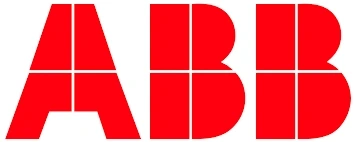
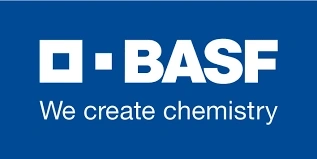
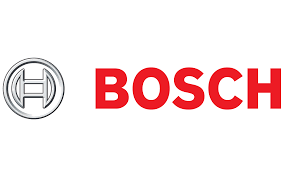
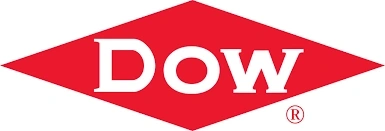
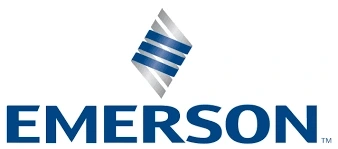
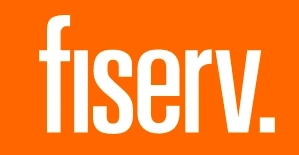
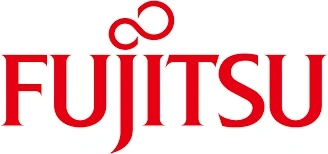
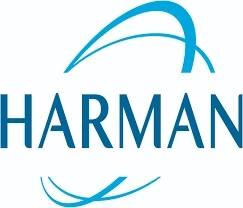
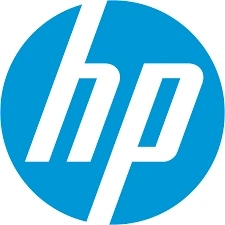

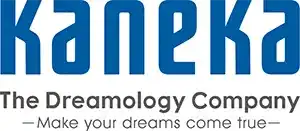
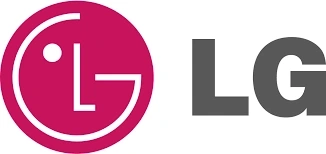

Thank you
Xcellent Insights has received your query!